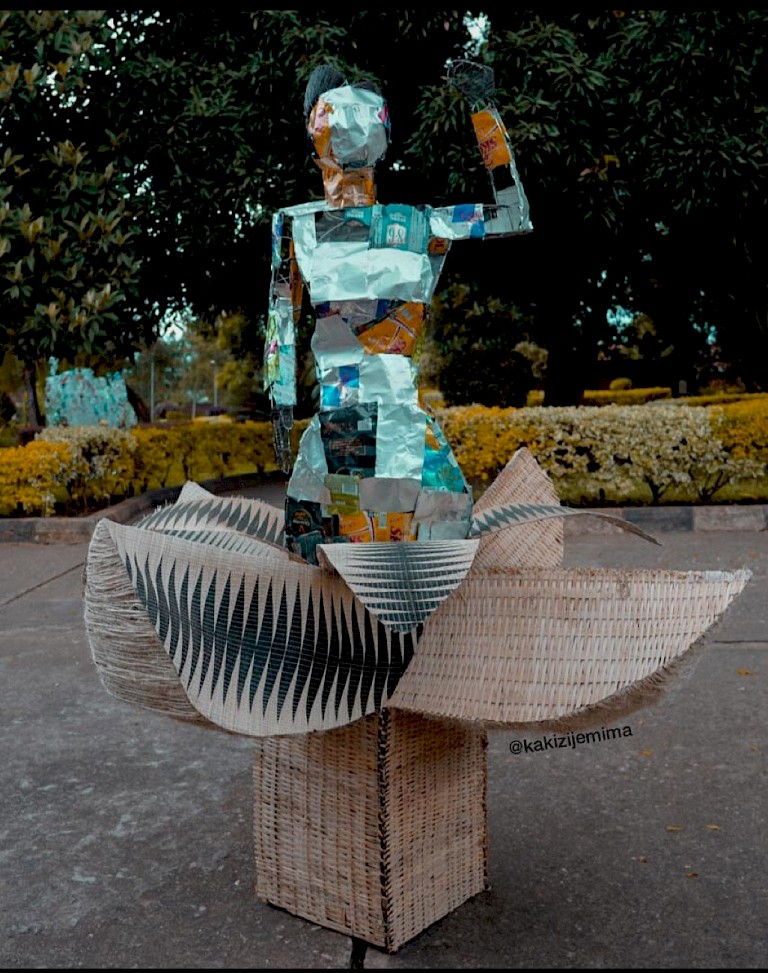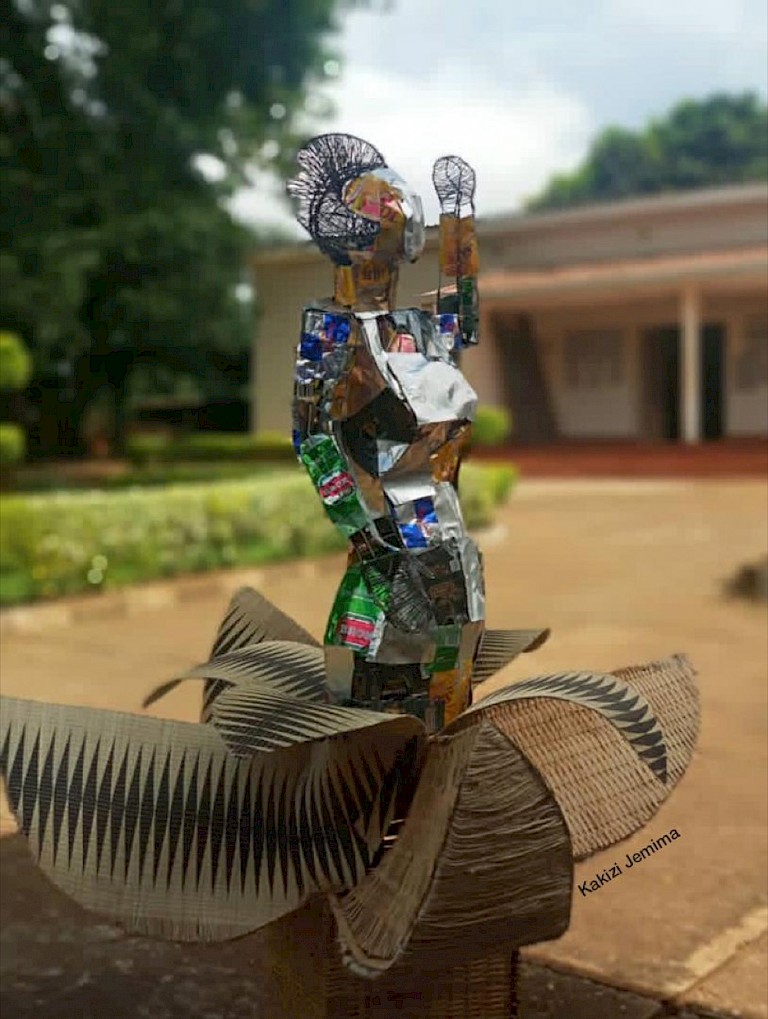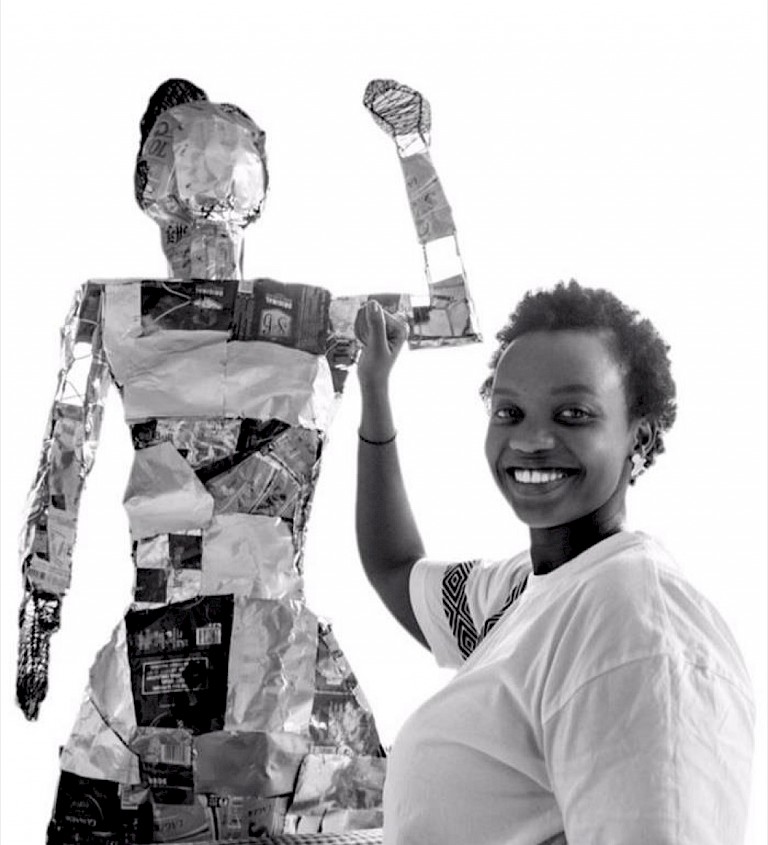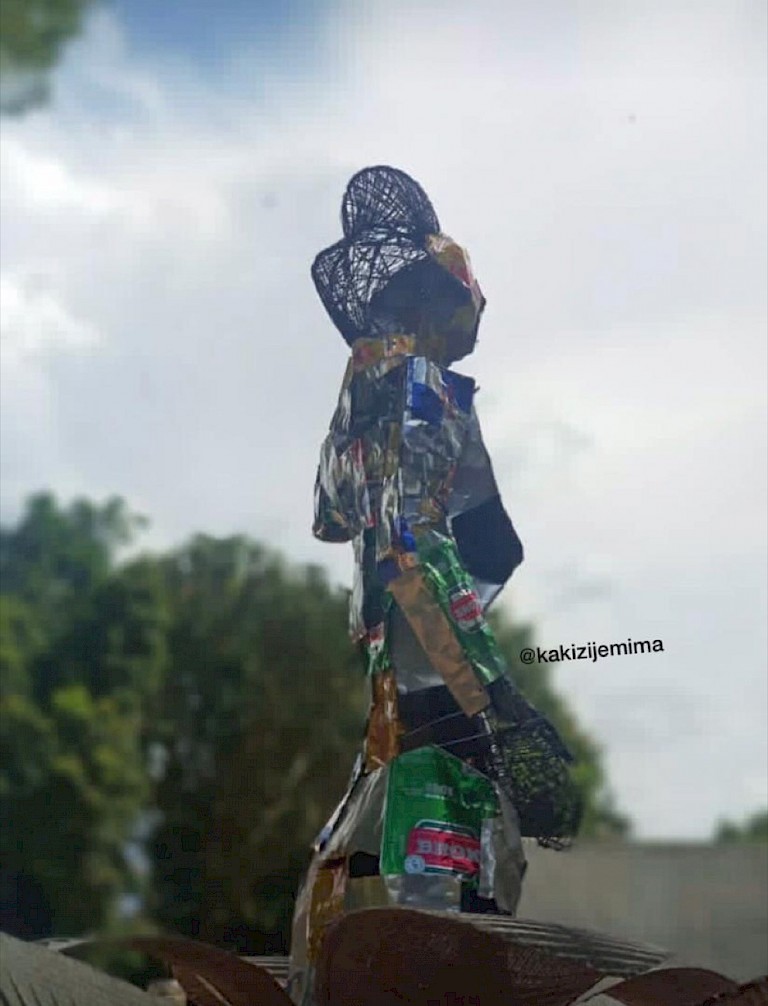



Planted in Fertile Soil is a work created with multiple materials - Mixed media - from discarded materials (wire, drink cans, insika) found in different locations in the locality. The artist built up the work using these materials with the help of other women. She describes a situation where she went to several locations of her city to recover these materials which were designated WASTE in order to use them for the work. She set out to utilise discarded materials to speak to the waste as resource concept.Support for Planted in Fertile Soil was provided by the Soul of Nations Foundation, Soul Center for the Arts, MASS Design Group, Rukundo Jean baptiste, Kwizera David, Climax Visual, the Republic of Rwanda, the Rwanda Art Museum, the Rwanda Cultural Heritage Academy, and the U.S. Department of State.
"Upcycling: the use of discarded material in art is of huge economic and environmental value. The work itself is a perfect mixed-media work providing contemporary cultural education, indigenous knowledge and environmental education at once. Given its combination of natural (biodegradable) and manufactured (non-biodegradable) material Planted in Fertile Soil has multiple references and contributions. One of which is call to action on women not just in the artist’s locality but globally, as torch bearers in social and humanitarian crises facing the global community. Also, its reference to a circular economy to avoid environmental degradation and how ‘waste’ can be resource and not a source of pollution is noteworthy. There is the aphorism “one man’s waste is another man’s resource.” Another interesting feature of the work is the minimalist use of material.
● The sculpture features bold petals embracing a woman raising a fist, symbolising strength and valour, women as nurturers and the wickerwork petals as the earth or mother of all.
● It highlights the significant contributions of Rwandan women to ancient architecture, particularly emphasising the use of insika wickerwork, which was traditionally a female-dominated activity.
● It underscores the connection between gender and indigenous culture by using materials traditionally crafted by women.
● The use of recyclable materials like wires and drink cans carries an environmental message, promoting green architecture and environmental protection.
● Incorporating insika, a traditional building material, is a way of encouraging Rwandans to embrace and be inspired by their culture.
● It draws attention to the issue of plastic and packaging pollution in Africa, emphasizing the importance of zero waste and responsible waste management."



